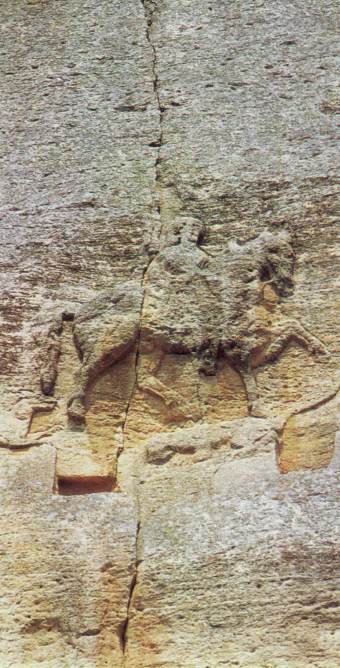 |
Madara
 |
The
Horseman of Madara
VIII-XIX
Century
an
impressive bas-relief, carved high
out
of the sheer rock, and depicting a
horseman
spearing a lion.
The
inscriptions around it concern events
dating
from 705 to 831 A.D. It is unique
in
Europe and is in the UNESCO List of
World
Cultural Heritage.
The historical and archaeological preserve of Madara is about ten
miles away to the east
from the town of Shoumen, up the picturesque and rocky slopes
of the Madara Plateau. The
area is rich in finds dating back to various different periods,
numerous cultures, traces left by
tribes and people that had either lived or just passed through there.
In Greek the name of Madara denotes 'bald', 'bare', 'treeless', such
was the impression
one got when looking at the rocks from some distance.
In the caves at the foot of the rocks there was a smallish settlement during
the Stone and
Copper ages (3500 years B.C.). In the so-called 'Small Cave' a number of
pottery, bone and flint
artefacts were discovered that illustrated
the life of the inhabitants. A
small prehistoric
settlement from the same period was also uncovered down along the
Madara Stream. Life in
Thracian times (Fourth up to the First Century B.C.) is evidenced by the
burial mounds at the
plateau as well as by the numerous finds of local ethnic origin.
In the large cave, close to the
permanent stream running there was the Thracian shrine of the Three Nymphs,
believed to have
healthgivers and clan protectors.
Late Antiquity finds (First to Fifth Century A.D.)
were quite abundant there. Lower
down from the rocks, in the valley below, there was a large villa rustica
building, a farmer's cot -
targe of sorts, designed like an Antique Greek home. Around
it there was a whole settlement
complete with a large public bathhouse, an Early-Christian Church as well
as many other civic
and private buildings, sheds, cellars etc.
Quite imposing, picturesque and abundant to finds from Antiquity is the
large caved - in
shelter formation, a specious ledge sheltered on three sides with sheer
rock walls.
Madara owns its world - wide renown to the unique relief of the Madara
Horseman, our
national pride, an image hewn high up the rock face. The horseman is lifesize,
riding from left to
right in a calm and dignified posture, his spear having just gone through
a lion at the front hoofs
of his horse. The horseman's hound is running close behind. The relief dates back to the
beginning of the Eighth Century A.D. It depicts a triumphal scene symbolizing
the grandeur of
the Bulgarian sovereign, most probably Khan Tervel and possibly
Asparoukh or Omourtagas
as well all the might of the Bulgarian State which at the very dawn
of its inauguration started
playing an important part in international politics and life. Even proud
and so far unconquered
Bizantium had had to take it into consideration. The relief is
an example of Early Mediaeval
Bulgarian art. It is surrounded by inscriptions that represent a rock chronicle
reflecting impor -
tant events and the relations between Bulgaria and Byzantium in the times
of Tervel, Kroum and
Omourtag (701 - 831 A.D.). Those inscriptions are part of the remarkable
amount of rock archi -
ves of the First Bulgarian State and point not only to the high cultural
level of the rulers but also
to their feelings of responsibility to the future generations.
During the Middle Ages Madara was the leading cult centre of the State
throughout the
heathen period as well as later on, after adoption of Christianity.
At the terrace situated to the north of the Horseman there is a considerable
architectural
ensemble of ancient Bulgarian cult buildings. There was a Proto-Bulgarian
sanctuary on top of
whose foundations a christian basilica had been built around the end of
the Ninth Century. All
around it there was a large monastery.
In the times of well developed Feudalism (Twelfth Fourteenth centuries
A.D.) Madara
had continued being a foremost cult centre. Up the rocks there were 150
hewn in cells, chapels
and tombs comprising a huge monastic ensemble inhabited by monks preaching
various different
heresies. The later had sprung up as a result of protest against feudal
oppression.
The cult ensemble included some other buildings as well. One of them looks
very much
like the Throne Room at Pliska as to its layout design.
Four houndred steps hewn in the rock lead up to the
plateau where the well - known
Madara Fortress is dated back to the Fourth Century and functional probably
until the Fifteenth
Century or thereabouts. At the foot of the rocks there is now a Museum
whose exposition illustra-
tes many sides of the life of Ancient as well as Mediaeval Madara.
please
wait for the images
folowing
now!!!
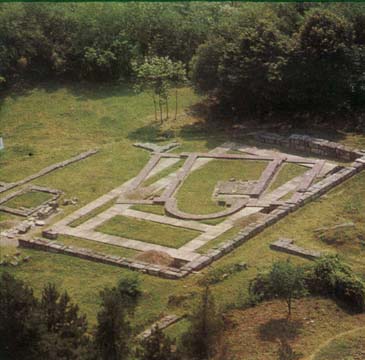
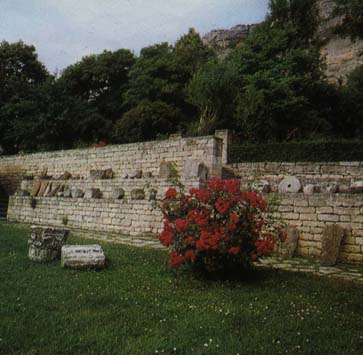
The
architectural ensemble
The Lapidarium
of
the Ancient Bulgarian
Royal
Palace
IX-X
Century
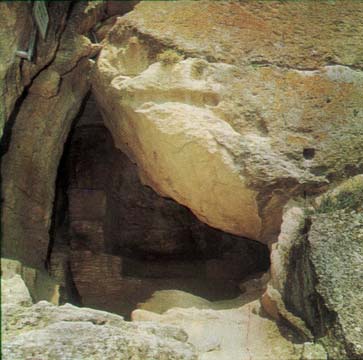
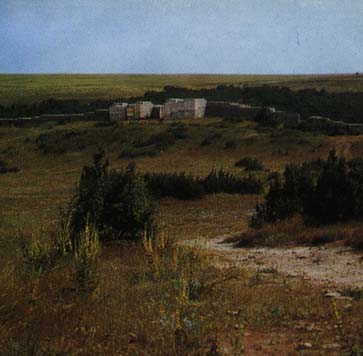
The
Mediaeval Rock Chapel
The Fortress up at the
XII-XIV
Century A.D.
Madara Plateau
IV-XIV Century
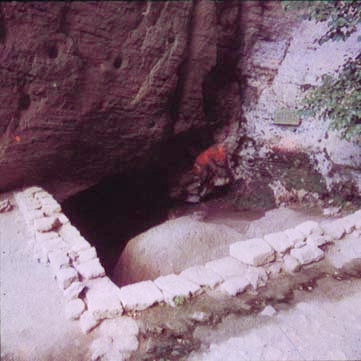

The
Small Cave
The Rock Monastery
3500
years B.C.
XII-XIV Century
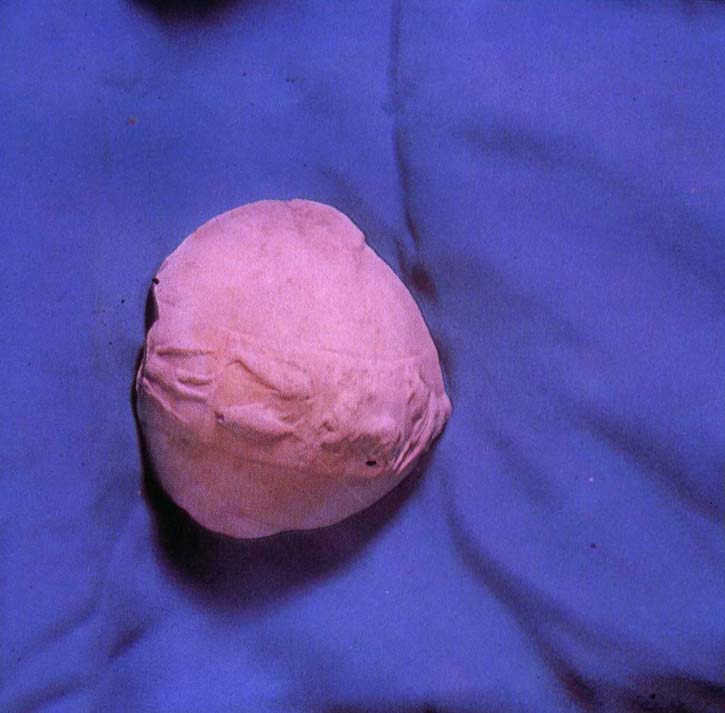
A
relief from the Three Nymphs
and
the Zodiac Shrine
V-II
Century B.C.